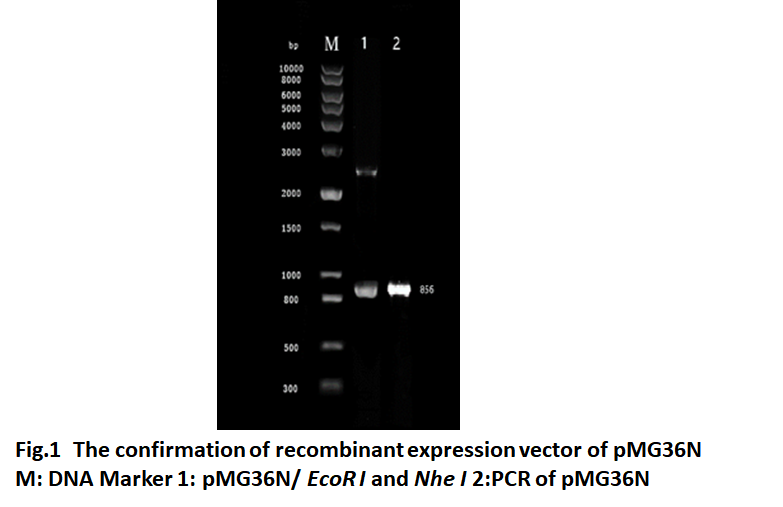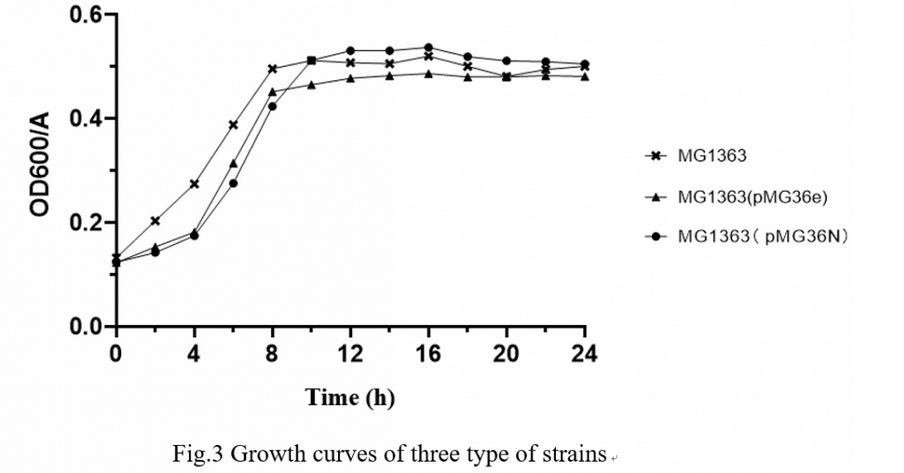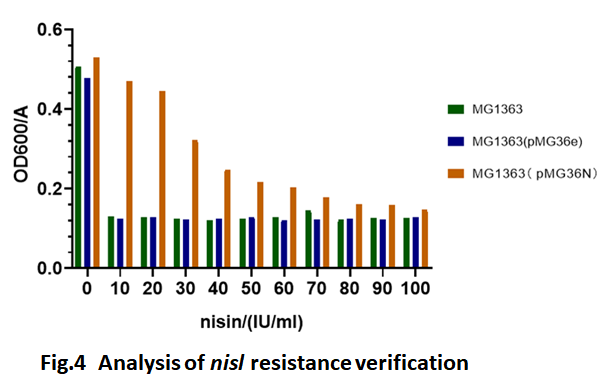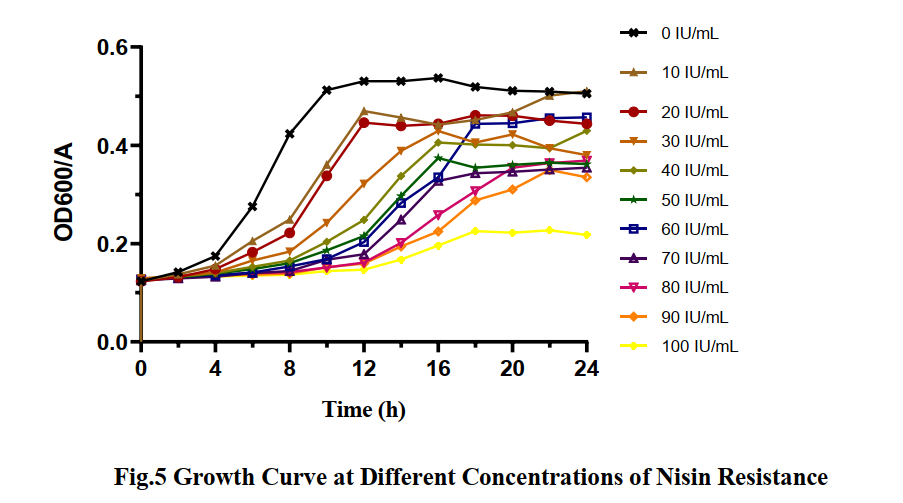Part:BBa_K1841001
nisI
Research from Torsten et al. revealed that the highest level of acquired nisin tolerance was achieved after coordinated expression of all four nisin immunity genes, containing nisI, nisF, nisE, and nisG. Functional analyses provided evidence that nisI acts as a nisin-sequestering protein that expels nisin molecules from the cytoplasmic membrane into the environment.
Sequence and Features
- 10COMPATIBLE WITH RFC[10]
- 12COMPATIBLE WITH RFC[12]
- 21COMPATIBLE WITH RFC[21]
- 23COMPATIBLE WITH RFC[23]
- 25COMPATIBLE WITH RFC[25]
- 1000COMPATIBLE WITH RFC[1000]
2019-SZPT-China
1. Expression of NisI in Lactococcus lactis MG1363
Since the biological chassis is ultimately to be valued in the intestine, a food grade resistant expression vector is required. We replaced the erythromycin resistance gene of the original plasmid pMG36e with the nisin resistance gene nisI. As shown in Fig.1, the restriction and PCR result show that nisI with size 856bp was inserted in pMG36e successfully.The recombinant vector named pMG36N.
The Lactococcus lactis MG1363 transferred with pMG36N were spread on the plate with nisin and erythromycin respectively. The result is showed in Fig.2, we can see that the recombinant strain could grow on the nisin-resistant plate, could not grow on the Emr-resistant plate, indicating that the resistance gene replacement was successful.
2.The study of nisin tolerance activity of Lactococcus lactis MG1363
We constructed a Lactococcus lactis MG1363 food grade vector with nisl resistance. In order to verify the function of the nisl part, we transferred the constructed vector into lactic acid bacteria to verify the tolerance of Lactococcus lactis MG1363 with the part nisI.
2.1 The growth curve of Lactococcus lactis MG1363, MG1363(pMG36e) and MG1363(pMG36N) in GM17 medium
The MG1363, MG1363 transferred with pMG36e and MG1363 transferred with pMG36N were inoculated in GM17 medium respectively. Sample was taken every 2 hours to measure the OD600 to examine its growth. Fig.3 is the growth curve of these three strains.
Growth curve showed that the three strains has the same growth trend in GM17 culture medium without nisin. After 4 hours of culture, they entered the logarithmic growth phase, and after 8 hours, the cells entered a stable phase.
2.2 The effect of nisin on the growth of MG1363, MG1363(pMG36e) and MG1363(pMG36N)
The MG1363, MG1363 with pMG36e and MG1363 with pMG36N were inoculated in GM17 medium with 0,10,20,30,40,50,60,70,80,90,100 IU/ml nisin respectively. As shown in Fig. 4, After 12 hours of culture, samples were taken and measured the OD600 to compare their growth.
The result showed that the growth of MG1363 and MG1363 transferred with pMG36e was inhibited strongly in GM17 culture medium with nisin, while the MG1363 transferred with pMG36N still growth very well. This demonstrated that the gene nisI encoding lipoprotein nisI is expressed in MG1363 and confers the resistance to nisin in this strain. But as the concentration of nisin increases, the growth of this strain is also depressed.
The effect of different concentration of nisin on the growth of Lactococcus lactis MG1363 transferred with pMG36N
The MG1363 transferred with pMG36N were inoculated in GM17 medium with 0,10,20,30,40,50,60,70,80,90,100 IU/ml nisin respectively. Sample was taken every 2 hours to measure the OD600 to examine its growth. Fig.5 is the growth curve of this strains.
As shown in Fig. 5, as the concentration of nisin increases, the growth of MG1363 transferred with pMG36N will be inhibited to some extent, and the logarithmic growth phase and the stationary phase will be delayed. Above all ,in the GM17 of 10 IU nisin/mL, the growth of MG1363 transferred with pMG36N was inhibited, and the growth of MG1363 and MG1363 transferred with pMG36e was strongly inhibited. Therefore, 10 IU nisin/mL of GM17 was selected as the best concentration of the growth of MG1363 transferred with pMG36N.
Reference
- Luo Lixin, Wang Cheng. Cloning of Nisin resistance gene nisI from Lactococcus lactis and its use as a screening marker. Journal of Microbiology Acta Microbiologica Sinica. 2009,49(9):1229 -1233
| None |





